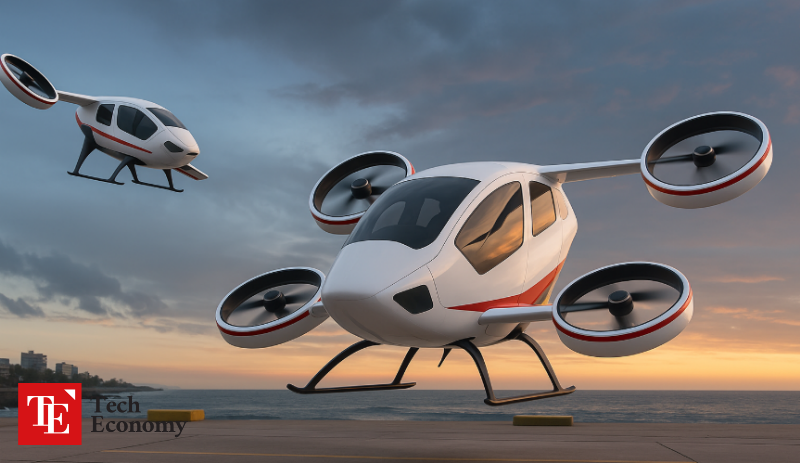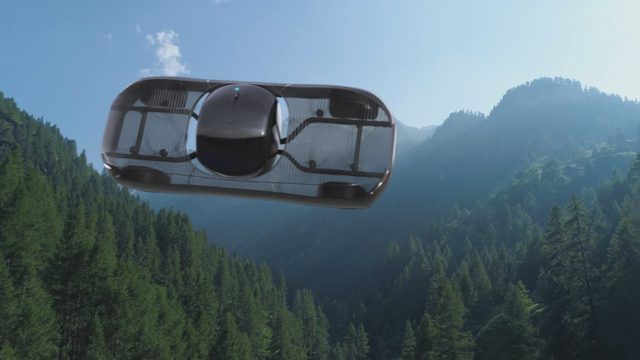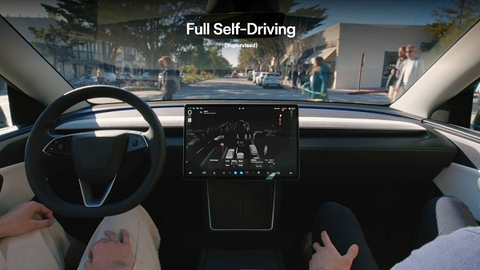Chinese manufacturers ramp up competition for dominance in 'flying car' sector amid saturated EV market
Input
Changed
China accelerates low-altitude mobility economy From ground dominance to aerial supremacy Market expected to grow fivefold by 2035

As the electric vehicle (EV) market reaches saturation, Chinese automakers are turning their attention to a new frontier: flying cars. Amid the Chinese government's push to promote a "low-altitude economy," the electric vertical takeoff and landing (eVTOL) sector is expected to become a highly profitable market, projected to grow to $15.7 billion (approx. 22 trillion KRW) by 2030.
Major Chinese Automakers Invest Heavily in eVTOL Market
According to the South China Morning Post (SCMP) on May 15, China's largest automakers are ramping up investments to lead the low-altitude mobility economy, with strong support from the government. AeroHT, a subsidiary of electric vehicle maker Xpeng, recently applied for a license from the Civil Aviation Administration of China (CAAC) to produce its first flying car. Prior to this, drone company EHang had already received a license to operate passenger low-altitude air travel services.
Legacy carmakers such as FAW Group’s Hongqi, Geely Automobile, GAC Group, and Chery Automobile are also pouring resources into eVTOL and drone development. Angel investor Yin Ran, based in Shanghai, noted, “Leading Chinese automakers are now showcasing their eVTOL technology and investing in the future.”
China's low-altitude economy refers to industries involving aircraft operating below 1,000 meters above ground level. Since 2021, when the government began policy support for inter- and intra-city aerial mobility, the sector has been growing rapidly. The Civil Aviation Administration of China projects that, driven by policy backing, technological innovation, and increased investment, the low-altitude economy will grow over fivefold between 2024 and 2035 to reach $486 billion (approx. 681 trillion KRW).
Battery Makers Join the Race
It’s not just automakers—battery manufacturers are also diving into the competition by developing high-performance batteries for eVTOLs. Industry leader CATL (Contemporary Amperex Technology) invested hundreds of millions of dollars last August in Shanghai-based eVTOL maker AutoFlight, forming a strategic partnership to develop battery solutions. Other companies such as CALB (China Aviation Lithium Battery), Eve Energy, Gotion High-tech, and Farasis Energy are also joining the race.
Advanced batteries are a critical component of eVTOLs. They determine flight performance, operation frequency, and overall economic viability. These batteries require much higher energy density and power output than those in electric cars. According to a recent report by Sinolink Securities, an eVTOL flying eight times a day with a battery lifespan of 1,000 cycles would need its battery pack replaced 14 times over a 20-year lifespan.
Furthermore, eVTOL batteries must achieve a discharge rate of 2C to 3C—two to three times that of conventional EV batteries (1C)—to provide the "burst power" needed for takeoff and landing. The cost is also significantly higher: aviation-grade batteries cost about 3 yuan (approx. 580 KRW) per watt-hour—around 10 times the cost of regular car batteries. A 200 kWh eVTOL battery can cost up to $83,000 (approx. 115 million KRW) per unit.
Chinese EV giant BYD, which started as a battery manufacturer in 1994 with just 20 employees, exemplifies how battery technology can serve as the foundation for automotive success. Under founder Wang Chuanfu’s leadership and innovation-driven strategy, BYD has evolved into a global EV leader, hailed for its vertically integrated business model grounded in battery technology.

Alef’s ‘Model A’ Inches Closer to Commercialization with U.S. Approval
U.S.-based flying car startup Alef Aeronautics has taken the lead in making flying cars a reality. In 2023, the company received a Special Airworthiness Certification from the U.S. Federal Aviation Administration (FAA), bringing its vehicle closer to commercialization. This certification evaluates civilian aircraft for safety and reliability and allows limited-purpose operations such as exhibitions, research, and development. Additional approvals are required to drive on public roads.
While the FAA notes that Alef’s vehicle is not the first to receive such certification, Alef claims the Model A is the first flying car capable of operating and parking like a regular vehicle. The Model A can drive on roads like a traditional car and take off vertically for flight. Its entire body rotates to function like a propeller. It has a road driving range of 200 miles (approx. 322 km) and a flight range of 110 miles (approx. 177 km), with a seating capacity of two.
Alef began developing the Model A in 2015, inspired by the flying cars in the sci-fi film Back to the Future. The company has received backing from entities including SpaceX, led by Elon Musk. So far, Alef has secured around 3,300 pre-orders. The Model A is priced at $300,000 (approx. 420 million KRW), with production expected to begin by the end of this year.





















